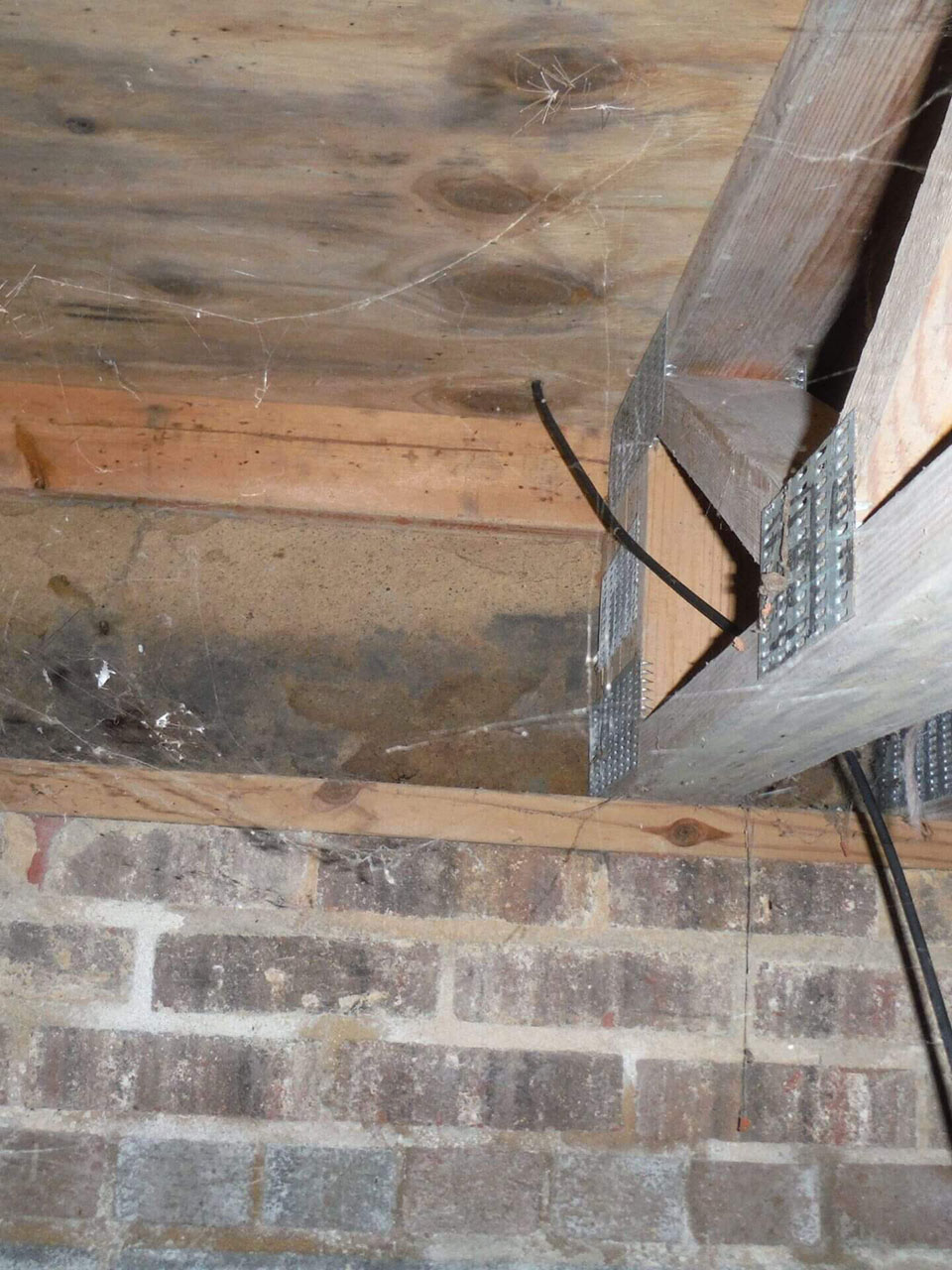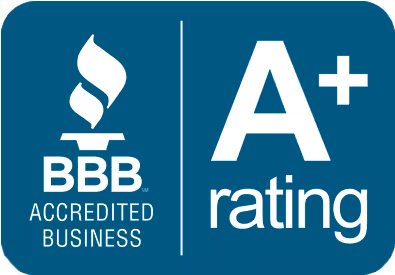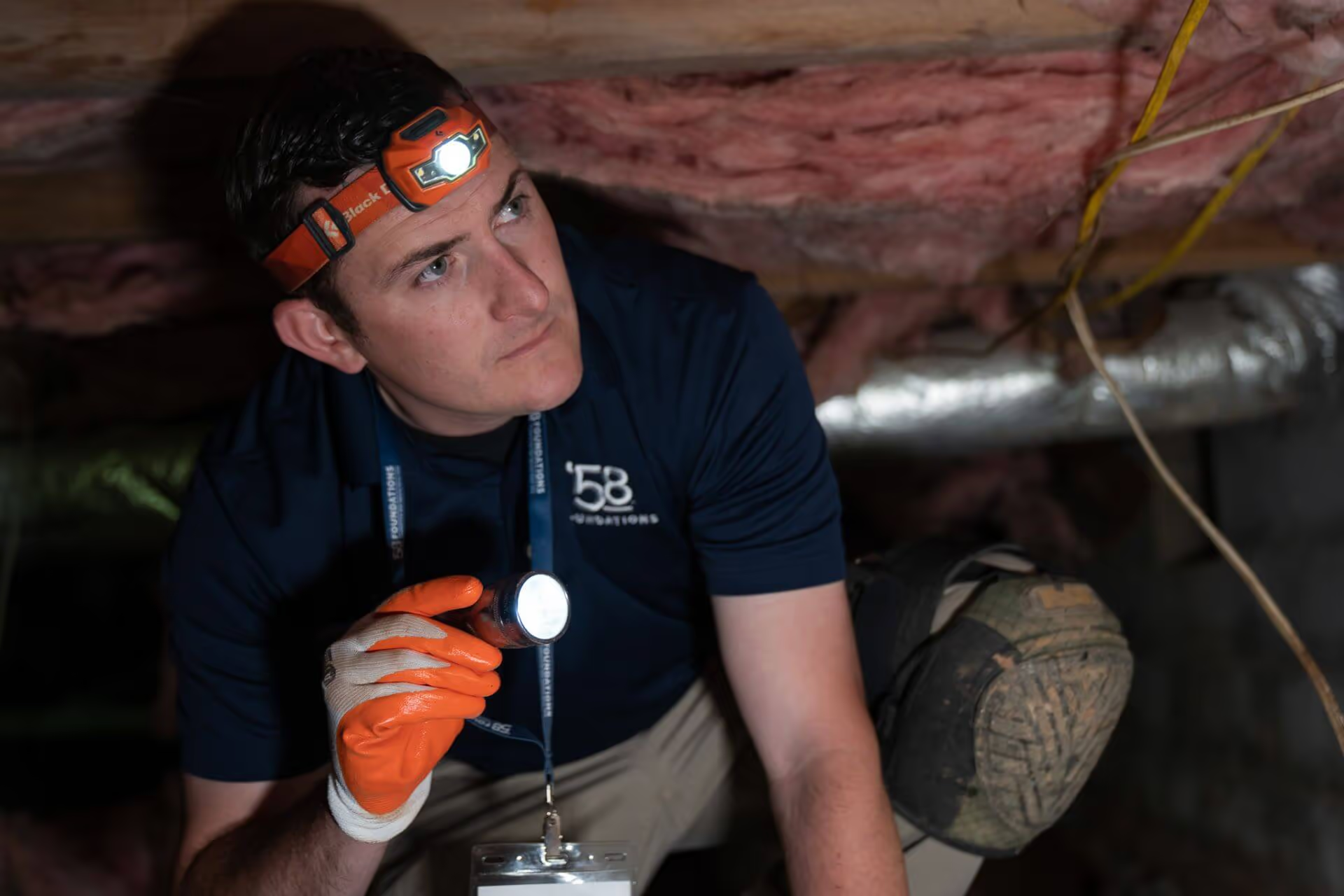Wood rot in floor joists can weaken your home’s structure and lead to costly damage. Learn how moisture, poor ventilation, or crawl space issues cause rot—and how professional repair and encapsulation can restore strength and prevent future decay.






The appearance of white, black, or even yellow/green staining on the wooden components within your crawl space could signal the presence of mold or wood rot. These stains are potential indicators of mold growth and should be promptly addressed.
Wood rot is a process of deterioration instigated by fungi that gradually consume wooden materials, resulting in structural deterioration and a weakening of the wood framing. In crawl space areas, such as floor joists, sill plates, and other framing elements, wood rot becomes particularly concerning due to its potential to compromise the overall integrity of the home’s structure, particularly the flooring system located above.
Ensuring the longevity of crawl space floor joists mandates vigilant inspections to detect and address signs of rot. A thorough examination can be carried out by entering the crawl space with a powerful flashlight, systematically observing and assessing the wood’s condition for any signs of staining or decay.
Prior to entering the crawl space, it is recommended to wear a respirator or, at the very least, a high-quality mask due to the potential presence of mold or fungi. Additionally, it is important to consider the possibility of fiberglass batt insulation being present in the floor joists.
For added convenience and expertise, you can always rely on our trained crawl space specialists to conduct a comprehensive inspection of your crawl space. Our experience in this field since 1958 equips us to navigate crawl spaces with precision.
While inspecting crawl space floor joists, be on the lookout for signs of wood rot such as discoloration, holes, or cracks. Gently tap on the wood and listen for dull sounds that may suggest the presence of internal dampness. Don’t overlook the sill plate around the crawl space’s perimeter, as this area is highly susceptible to moisture-related damage, especially if the vents remain open. Open vents facilitate the entry of outdoor humidity into the crawl space, creating the ideal conditions for wood rot and mold growth.
To combat wood rot, it is essential to address the underlying fungal presence. ’58 Foundations & Waterproofing employs Dilute Oxidation Technology (DOT) for this purpose, an innovative and low-chemical cleaning solution developed at Carnegie Mellon University. We proudly serve as exclusive DOT Ambassadors, showcasing our commitment to cutting-edge solutions.
Additionally, comprehensive moisture control measures must be implemented to prevent further deterioration. This involves the installation of a vapor barrier to ward off moisture and the deployment of a dehumidifier to maintain a dry environment. If groundwater leaks are identified, the installation of a drainage system may be necessary, an area in which ’58 Foundations & Waterproofing specializes.
When confronting wood rot or mold issues within your crawl space, there is no better ally than the team adept at mold cleaning, moisture control, and waterproofing. At ’58 Foundations & Waterproofing, we offer a distinctive combination of expertise and experience, built upon a legacy of serving clients since 1958. Rest assured, your crawl space is in capable hands with us.






We respect your privacy. By submitting, you authorize '58 Foundations and Waterproofing to reach you via call, email or text for information about your project needs. We will never share your personal information with third parties for marketing purposes. You can opt out at any time. Message/data rates may apply. Consent is not a condition of purchase. Privacy Policy